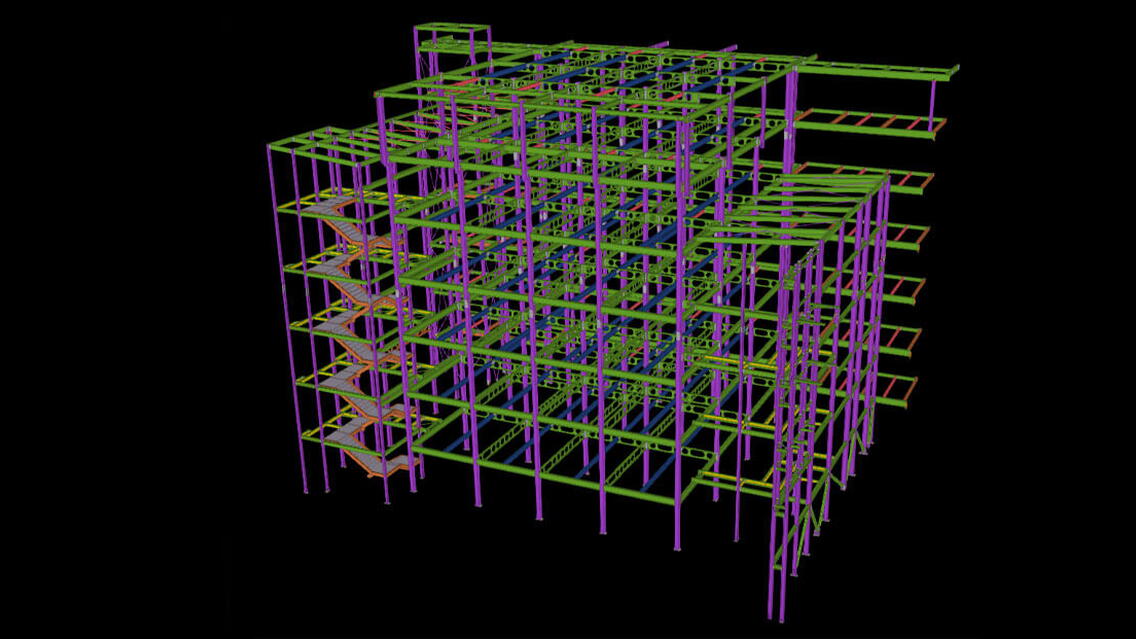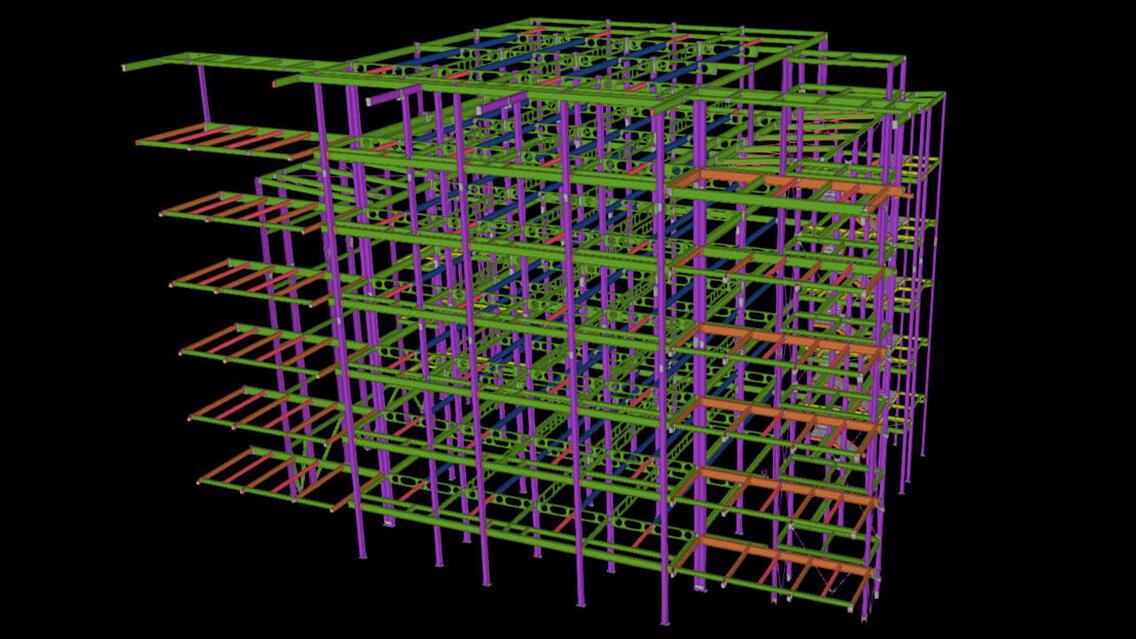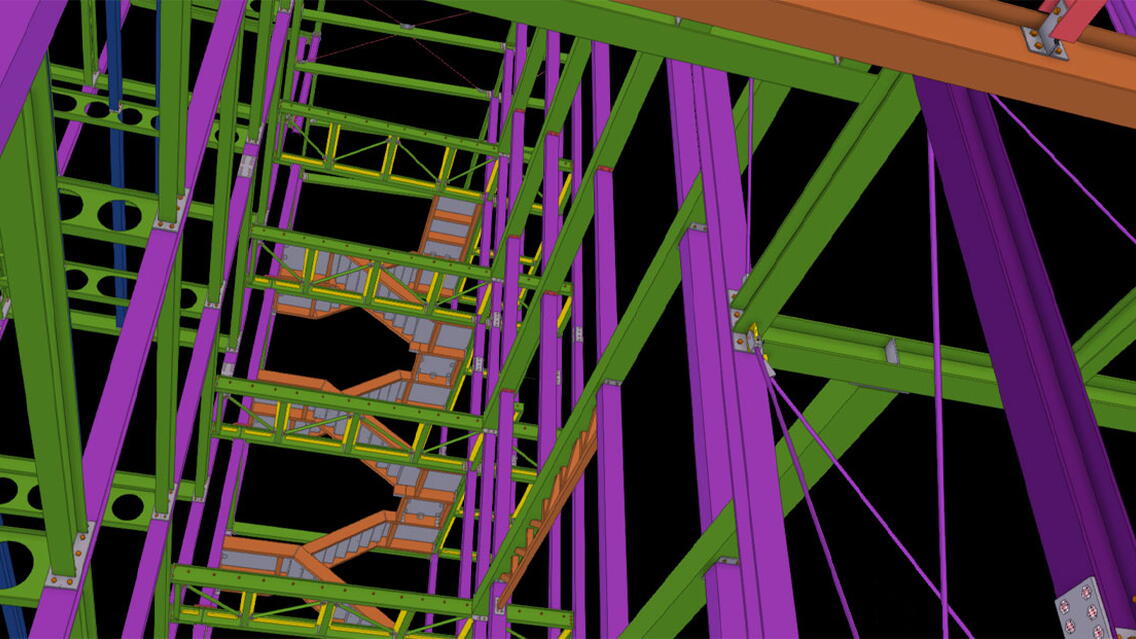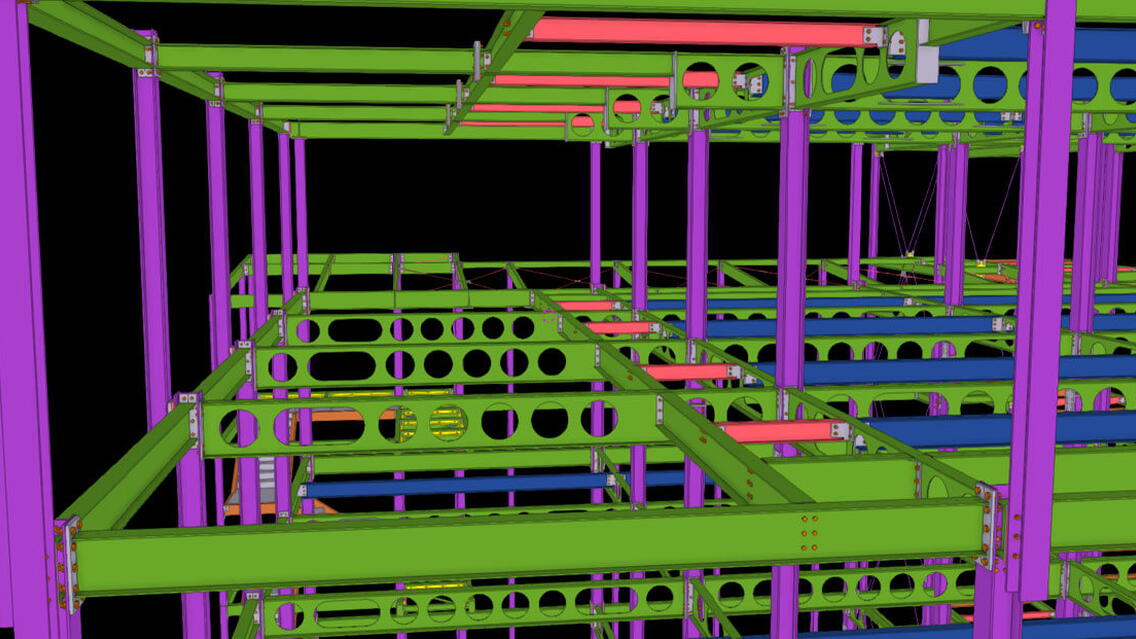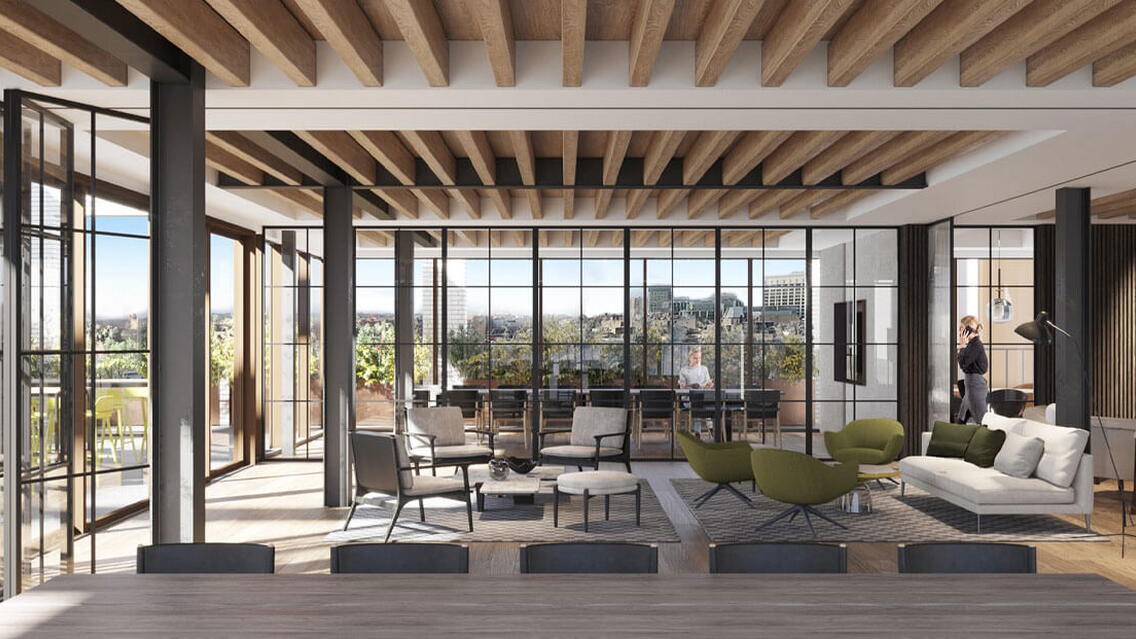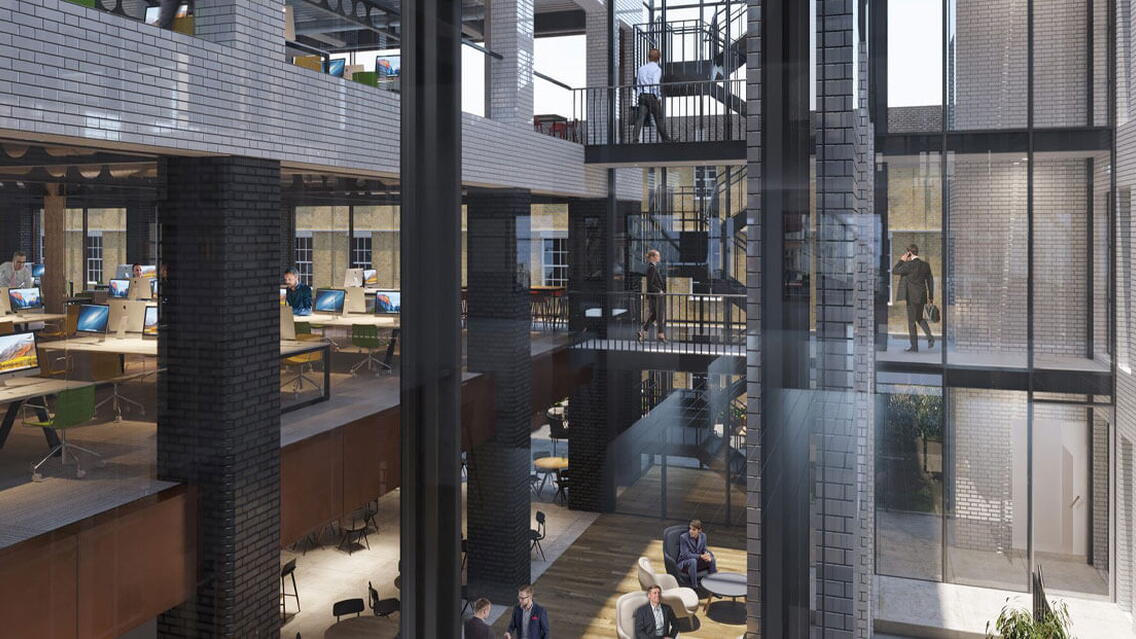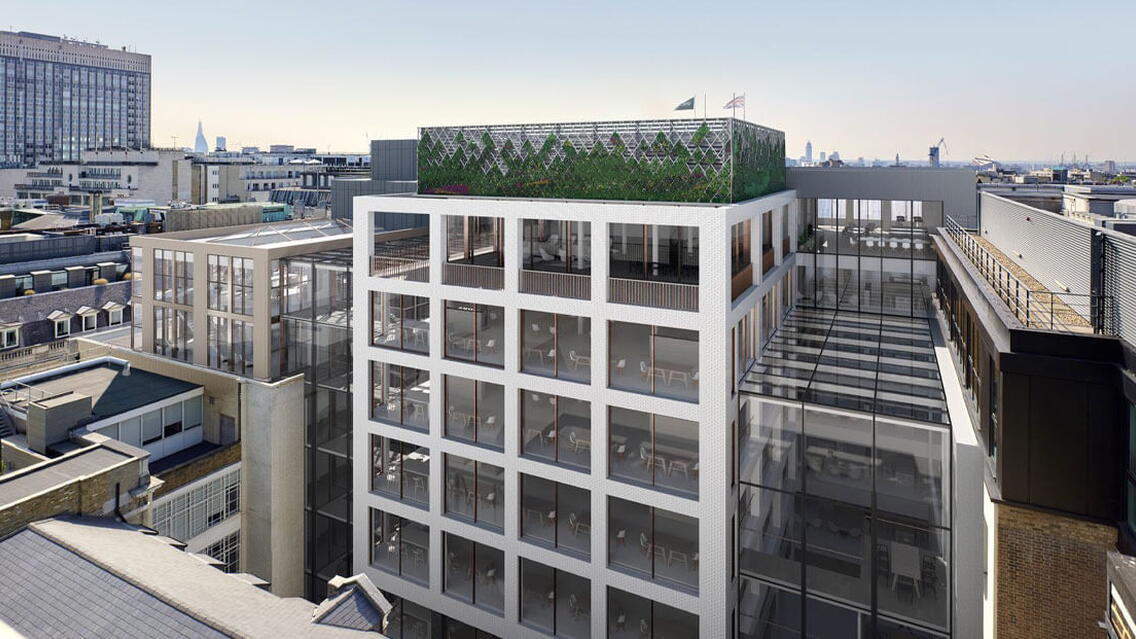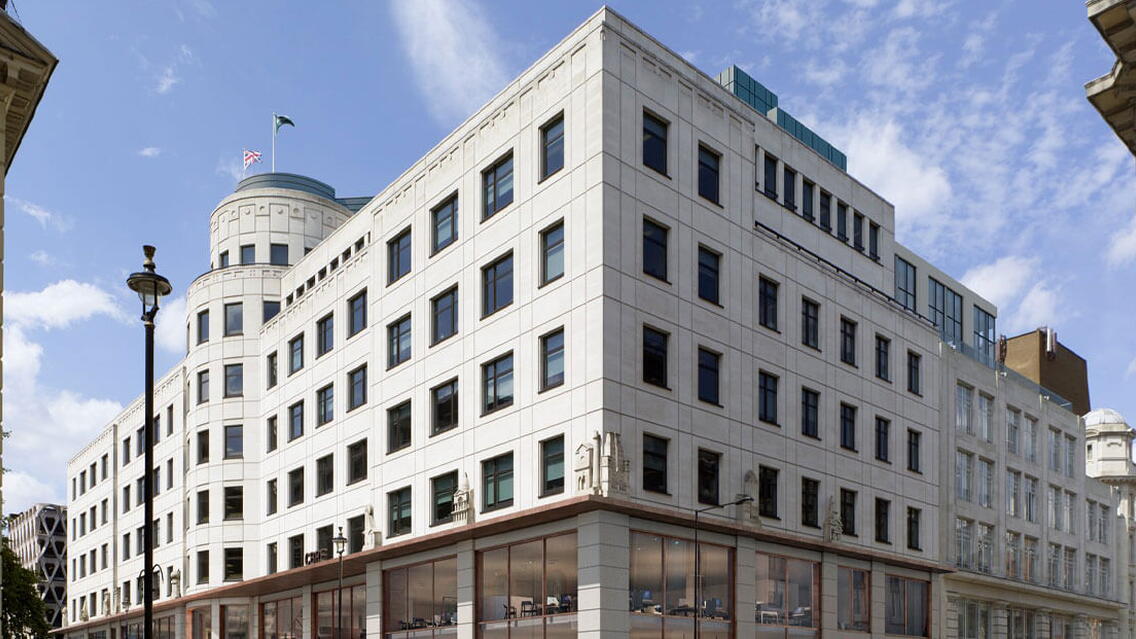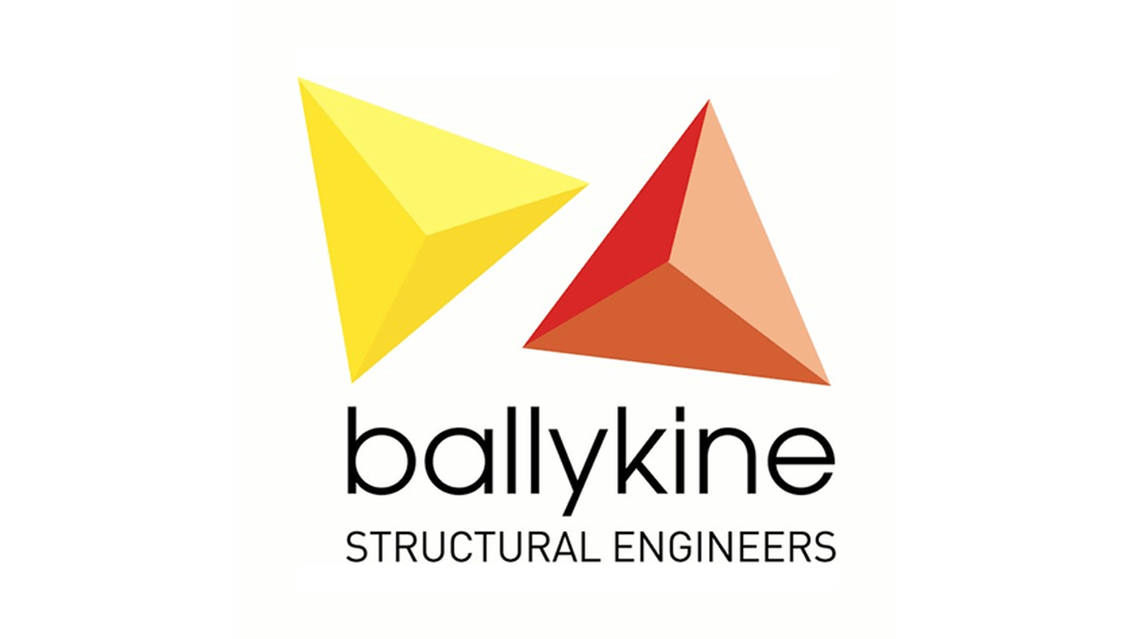This project is a major redesign and redevelopment of Henrietta House, an early 1990s building owned by Lazari Investments and home to CBRE’s UK HQ. The building will be transformed to create a world-class workplace experience for 1,700 employees and visiting clients, featuring coworking, on-site wellness facilities, SMART building technology and sustainable solutions.
What were the challenges and what made the project successful?
This project was an extension/refurb to an existing building and, consequently, the main challenge was to finish the project to time while keeping disruption to the surrounding buildings to a minimum. The building also had to remain open for business throughout the entire duration of the contract. This required careful planning alongside the main contractor (FaithDean) to ensure we could introduce quick and effective ways of connecting back to the existing building without causing too much disturbance. The steel on the project was also exposed throughout the contract, therefore, for aesthetic reasons, connections needed careful consideration and coordination with the Architect (MoreySmith). This was only possible by successfully using numerous Tekla/Trimble products as they were able to help lessen the impact of the problematic conditions that arose throughout the contract.
Due to the complicated nature of this project we were extremely happy that we were able to solve problems early on through the use of Tekla apps and extensions. I have listed below many areas where we were able to solve these problems ahead of time and stay on programme.
Connection design
A complex task as we needed aesthetic approval from the Architect. We were able to do this through the use of virtual tours and Tekla visualizer videos, as the Architect was then able to visualize how the steel would look on-site and this, in turn, enabled us to speed up the approval process.
We were able to use the IdeaStatica extension to design connections more simply by exporting them directly from Tekla after they were detailed. This integration between apps allowed our drawing office to detail connections at a much higher rate than normal.
IFC’s were used in several locations but one of the most beneficial was where we connected back to the transfer deck as this area was done by another fabricator (Ermine Engineering). We were able to align all steel up effortlessly and made sure no clashes would occur.
Restricted access
Another problem we encountered, and successfully resolved through the use of IFC’s, was where we had restricted access to bolts on our base plates due to the number of additional deck supports needed for the floor below. We were able to simply switch bolt types which allowed us to tighten bolts from above the steel, which prevented them from going into inaccessible cavities. Without the use of IFC’s, we would have encountered this issue on-site where holes would have needed to be reamed out to allow for the different fixing which is not only costly but more time-consuming.
The project in numbers
- Additional office space = 43,000 sqft
- Height = 33m
- Steel tonne = 350t
